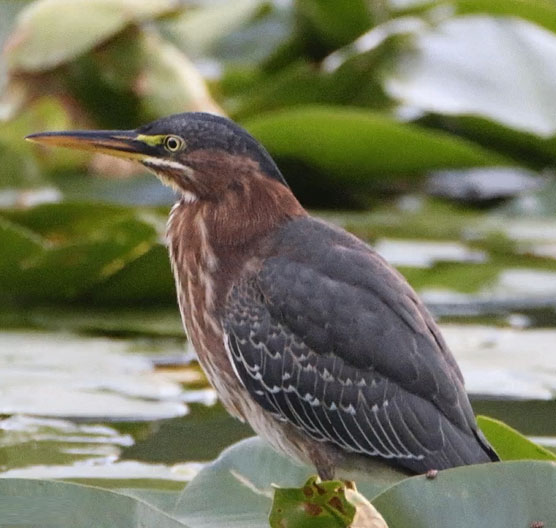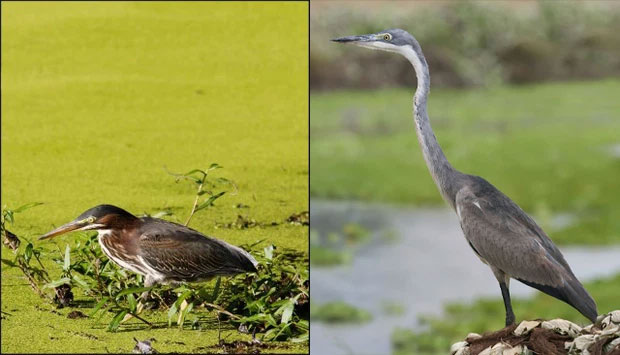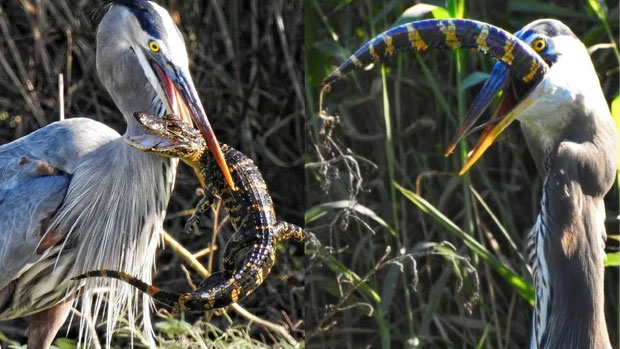The Great Blue Heron is a large bird belonging to the Ardeidae family, commonly found in open water areas and wetlands in North and Central America. They typically have a considerable size, with an average height of 1.3 meters, a length from head to tail also around 1.3 meters, and a wingspan exceeding 2 meters.
Although the Great Blue Heron’s diet primarily consists of fish, they are also known to eat shrimp, crabs, insects, mice, and other small mammals. They even consume amphibians like frogs, snakes, reptiles, and occasionally young crocodiles and sharks.

The Great Blue Heron is quite large, averaging 1.3 meters in height…
However, what makes the Great Blue Heron truly impressive to people is its neck.
As observed, the Great Blue Heron can cleverly manipulate the length of its neck, either shortening it or extending it skillfully.
This before-and-after image might lead people to think that this bird loves to eavesdrop on drama, always stretching its neck to catch every detail when something happens.






…but once they are eavesdropping, they are fully engaged.
However, this is merely a biological mechanism of the Great Blue Heron. The action of extending their neck is simply to swallow their prey more easily.
The digestive system of the Great Blue Heron is quite unique. They have a large beak, and their elastic esophagus and stomach allow them to swallow even large prey. This is why a Great Blue Heron can consume a whole young crocodile, swallowing it whole from head to tail.


















































